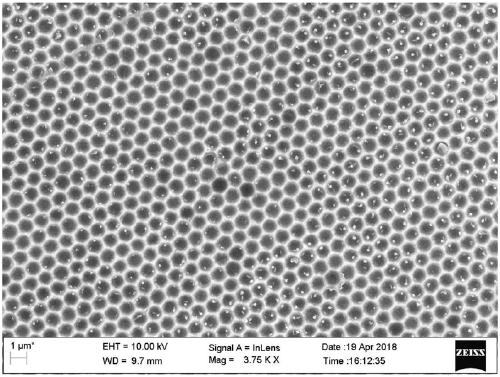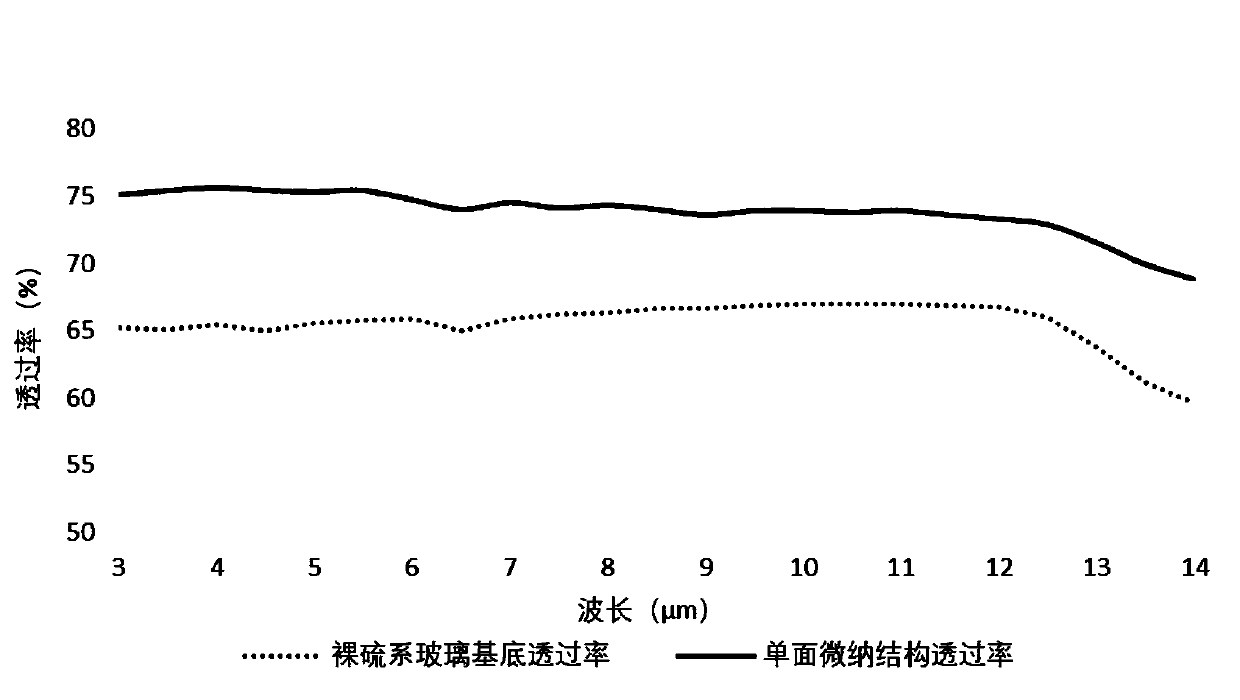Method for improving infrared band transmittance by processing micro-nano structure on surface of chalcogenide glass
A chalcogenide glass, micro-nano structure technology, applied in optical components, optics, instruments, etc., can solve the problems of unsuitable scale three-dimensional structure, only suitable for, unable to control the microstructure morphology, etc., to solve the problem of film quality, The effect of avoiding contact damage and good anti-reflection micro-nano structure stability
- Summary
- Abstract
- Description
- Claims
- Application Information
AI Technical Summary
Problems solved by technology
Method used
Image
Examples
Embodiment 1
[0027] For the chalcogenide glass As40Se60 (As40Se60, Joint Research Center of Chengdu University of Information Technology & Chengdu Lansun Optoelectronics Technology Co., Ltd.), a regularly arranged three-dimensional bowl-shaped micro-nano structure is designed to achieve 3 μm ~ 12 μm broadband anti-reflection, specifically The processing process is as follows:
[0028] (1) On the surface of the chalcogenide glass As40Se60, apply a coating of ultraviolet imprinting glue (code name 04n, Obducat micro-nano imprinting company) with a thickness of 100nm in a glue-spinning manner;
[0029] (2) Use the SiC printing plate engraved with the target pattern (arranged by three-dimensional bowl-shaped structural units, consistent with the micro-nano structure etched on the surface of the chalcogenide glass As40Se60) to imprint the polyethylene (PE) transfer template, first in Heat at 155°C for 100s, then cool down to 100°C and hold for 90s, then cool down to 90°C, transfer the target pa...
PUM
| Property | Measurement | Unit |
|---|---|---|
| Thickness | aaaaa | aaaaa |
Abstract
Description
Claims
Application Information
 Login to View More
Login to View More - R&D
- Intellectual Property
- Life Sciences
- Materials
- Tech Scout
- Unparalleled Data Quality
- Higher Quality Content
- 60% Fewer Hallucinations
Browse by: Latest US Patents, China's latest patents, Technical Efficacy Thesaurus, Application Domain, Technology Topic, Popular Technical Reports.
© 2025 PatSnap. All rights reserved.Legal|Privacy policy|Modern Slavery Act Transparency Statement|Sitemap|About US| Contact US: help@patsnap.com



